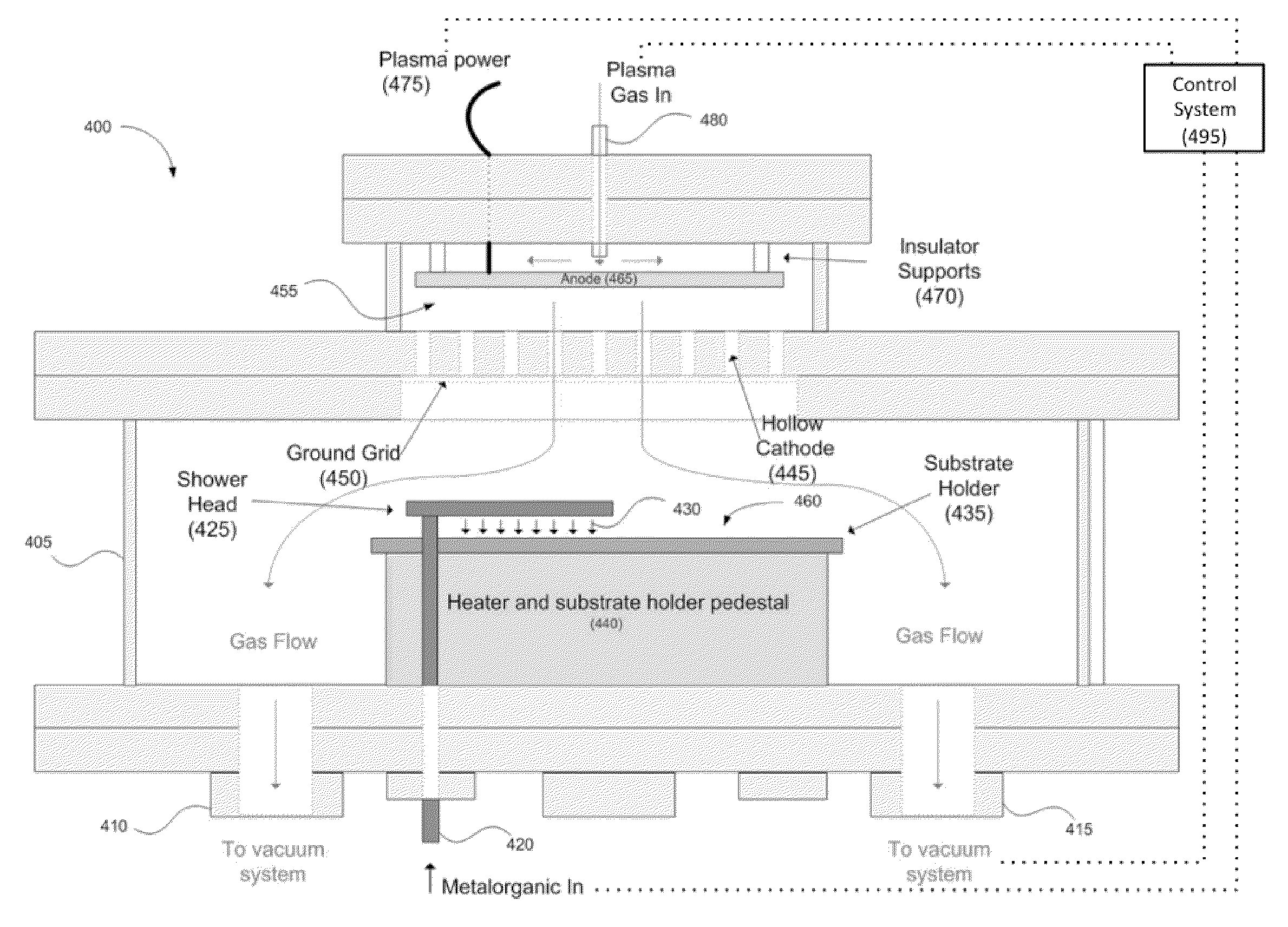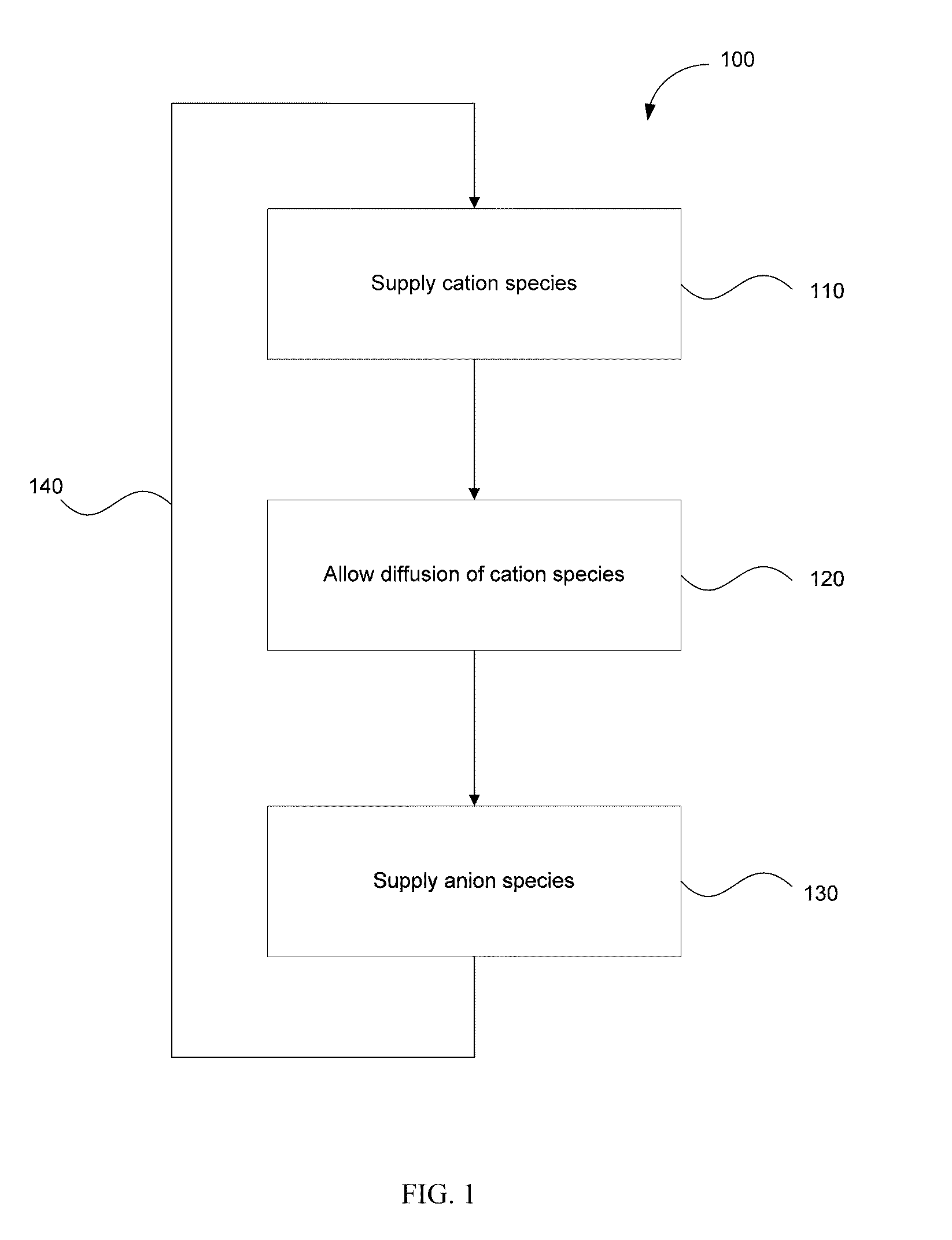Migration and plasma enhanced chemical vapor deposition
a technology of chemical vapor deposition and plasma, applied in the field of thin films, can solve the problems of unwanted effect, dust formation, inadvertent dust formation, etc., and achieve the effect of enhanced chemical vapor deposition
- Summary
- Abstract
- Description
- Claims
- Application Information
AI Technical Summary
Benefits of technology
Problems solved by technology
Method used
Image
Examples
example
[0115]A sapphire substrate was provided in a reaction chamber (such as the reaction chamber of FIG. 4) of a plasma processing reactor. The plasma processing reactor included a plasma generator for forming active neutral species of nitrogen. Trimethylgallium was supplied to the reaction chamber at a pressure of about 0.1 Torr for a time period of about 1 minute. The substrate was maintained at a temperature of about 500° C., a temperature above the decomposition temperature of trimethylgallium. Under such conditions, gallium metal deposited on the surface of the sapphire substrate via the decomposition of the trimethylgallium. The flow rate of nitrogen was about 50 standard cubic centimeters (“sccm”) from the plasma source during the deposition of gallium. No power was provided to the plasma generator (i.e., no active neutral species of nitrogen were formed) during the deposition of gallium on the sapphire surface.
[0116]After about 1 minute, the flow of trimethylgallium into the reac...
PUM
| Property | Measurement | Unit |
|---|---|---|
| Volume | aaaaa | aaaaa |
| Volume | aaaaa | aaaaa |
| Volume | aaaaa | aaaaa |
Abstract
Description
Claims
Application Information
 Login to View More
Login to View More - R&D
- Intellectual Property
- Life Sciences
- Materials
- Tech Scout
- Unparalleled Data Quality
- Higher Quality Content
- 60% Fewer Hallucinations
Browse by: Latest US Patents, China's latest patents, Technical Efficacy Thesaurus, Application Domain, Technology Topic, Popular Technical Reports.
© 2025 PatSnap. All rights reserved.Legal|Privacy policy|Modern Slavery Act Transparency Statement|Sitemap|About US| Contact US: help@patsnap.com



